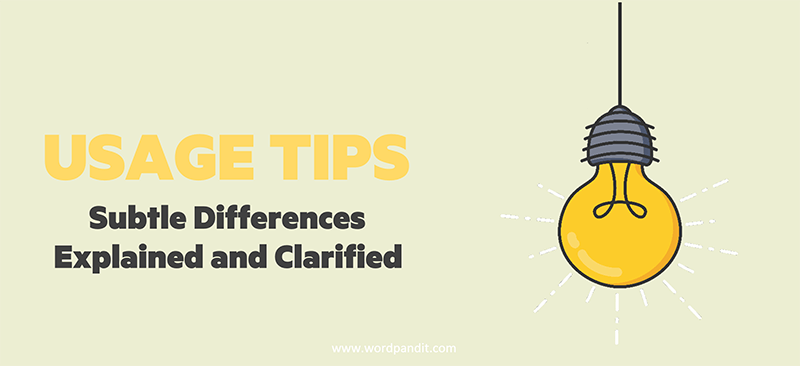Crevasse vs. Crevice: Understanding the Difference ✨
Introduction
Imagine you’re hiking 🥾 in the mountains 🏔️, and your guide warns you about a “crevasse.” You might think, “Oh, just a small crack, right?” But the next moment, you realize it’s a deep chasm in the glacier ❄️ that could swallow you whole! 😨 The words crevasse and crevice sound similar, but mixing them up can lead to a pretty steep misunderstanding—literally. Let’s explore the differences between these often-confused terms so you won’t stumble the next time they come up. Understanding these distinctions can make a huge difference, whether you’re reading a book 📚, watching a nature documentary 📺, or even exploring the great outdoors 🏞️ yourself. Knowing the correct usage of these terms can help you communicate more effectively 🗣️ and avoid confusion in various situations. 🤓
Definition and Pronunciation
Crevasse (krə-ˈvas): A large, deep crack, typically found in a glacier or ice sheet. ❄️ Crevasses are dangerous ⚠️ and can be dozens of meters deep. They form when the ice shifts and moves, creating massive gaps that can be hidden by snow, making them especially hazardous for climbers and hikers. 🧗♂️
Crevice (ˈkre-vəs): A narrow opening or fissure, especially in a rock 🪨 or a wall. Crevices are much smaller in scale compared to crevasses, more like the cracks you might find in old pavement or rock faces. These can be found in various environments, from mountain ranges ⛰️ to urban settings 🏙️, and often serve as habitats for small animals 🦎 or places where plants take root. 🌱
Etymology
Crevasse comes from the French 🇫🇷 word “crevasser,” meaning “to break or burst.” 💥 Its use is primarily associated with large geological structures, specifically ice 🧊. The term has been adopted into English to describe these dramatic, often perilous features of glaciers. 🏔️
Crevice comes from the Old French 🇫🇷 word “crevice,” which also implies a crack but on a smaller scale, usually in rocks or walls. 🏚️ The word is used to describe those little splits and fissures that can be found almost anywhere, from natural landscapes 🏞️ to man-made structures. 🏠
Usage Examples
Crevasse: “The climber narrowly avoided falling into a crevasse hidden beneath a layer of snow.” ❄️ Crevasses are often hidden by a thin layer of snow, making them particularly dangerous for mountaineers who must tread carefully to avoid falling in. 🧗♀️
Crevice: “The small lizard 🦎 scurried into a crevice in the rock 🪨 to hide from the sun.” 🌞 Crevices provide shelter for small creatures, offering protection from predators 🦅 and harsh weather conditions. 🌧️
Synonyms & Antonyms
Crevasse:
- Synonyms: Chasm 🌌, fissure, abyss, gorge, rift 🌋
- Antonyms: Ridge, mound, hill, peak 🏔️
Crevice:
- Synonyms: Crack, slit, gap, cleft, split ✨
- Antonyms: Seam, joint, connection, bond 🔗
Comparison and Contrast
A crevasse is usually a deep, potentially dangerous crack found in ice 🧊, while a crevice is a smaller, more harmless opening, often in rocks 🪨 or structures. Picture a mountaineer navigating around wide gaps in a glacier—those are crevasses, and falling in could be deadly ☠️. On the other hand, a crevice is more likely something you’d see in a rock wall where a plant 🌱 might grow. The difference in scale is key: crevasses are vast and can be life-threatening, whereas crevices are typically small and benign. Crevasses are the stuff of mountaineering nightmares 😱, while crevices are more mundane, though they still serve important roles in nature, such as providing habitats for insects 🐜 and small animals 🐁.
Contextual Usage
“While hiking across the glacier, they carefully navigated around several crevasses 🧗♂️, but later relaxed at camp 🏕️, observing small crevices in the rocks around them.” This sentence highlights the difference in scale and danger between the two terms, emphasizing the care needed to avoid crevasses while acknowledging the more common presence of crevices in everyday natural environments. 🌿
Mnemonic Devices
Crevasse is big like an “ass” (pardon the humor 😂), and can swallow you up if you’re not careful. This helps remind you that a crevasse is a large, dangerous crack. ❄️
Crevice is small like a “slice” 🍰 and is something you could fit your finger into. ☝️ This mnemonic is useful for remembering that a crevice is a narrow, small opening. 🪨
Related Words
Other confusing word pairs include affect vs. effect 🤯, complement vs. compliment 💬, emigrate vs. immigrate ✈️, and stationary vs. stationery ✏️. These, like crevasse and crevice, often trip up even native speakers. Understanding these distinctions can significantly enhance your vocabulary and prevent common misunderstandings in both written ✍️ and spoken communication. 🗣️
Conclusion
By now, you should feel confident in distinguishing between crevasse and crevice. 😊 Remember, a crevasse is vast and dangerous, found in glaciers 🏔️, while a crevice is a much smaller crack, commonly seen in rocks 🪨. Next time you’re out in nature 🌿—or just reading an adventurous novel 📖—you’ll know exactly which term to use! Knowing these differences not only helps in understanding literature and documentaries but also ensures clear communication in everyday conversations, especially when describing natural features. 🌍
Test Your Knowledge: Crevasse vs. Crevice Quiz
1. The climber fell into a deep ___.
2. The ants 🐜 made their home in a small ___ in the wall.
3. Crevasse refers to a small crack in a rock.
4. Identify the synonym of “crevasse”:
5. The glacier was full of dangerous ___ that made crossing treacherous.
6. While exploring the glacier, they had to avoid a dangerous ___, but later found a small ___ in the rock to take shelter.
7. Which word has its origins in French meaning ‘to break or burst’?
8. The word ‘crevasse’ can be used to describe a small crack in a wall.
9. The mountaineer avoided a ___ in the glacier and later noticed a small ___ in the rock face.











